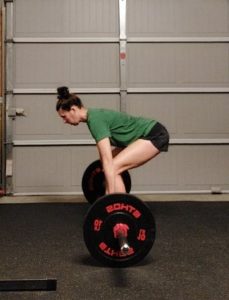Cross training is an important part of any effective training program. OK, what kind and how often should it be done? The answer depends on you as an individual athlete but here are a few reasons you might want to give cycling a try.
Cadence. Running at an appropriate running cadence has big benefits. Hitting 180 steps per minute can reduce injury risk, increase speed and create more efficient movement. It’s a lot easier to hit that rate of turnover when you’re cycling than when you’re running, especially in the beginning. Pedal at 180RPM or more to train your nervous system for faster leg movements then watch it happen on your next run. 
Muscles. Pedaling away for an hour doesn’t work muscles the same way as running. Instead, it builds complimentary muscles that help turnover and strengthen your core. While both sports use your quadriceps, hamstrings, glutes and calves, cycling is a different movement with different muscle fiber firing demands. Giving those muscle groups a different job makes them more adaptable and able to tackle tough challenges.
Low Impact. Cycling is a low impact sport. It builds cardiovascular fitness without pounding your bones on the road and gives your body a break. That will help it heal and relax and that’s a huge plus for recovery. Riding a bike is also a good tool when you’re coming back from an injury. It keeps you fit without opening you up to the chance of re-injury.
Options. Picking a bike as your cross training tool gives you lots of choices. You can take an indoor cycling class with your best runner friends or hit the trails on your mountain bike for some peace and quiet. Try intervals on the road or a long slow ride to lunch and back. As long as you have a helmet and some reflective gear, you’re good to go wherever your heart desires.
So grab your bike from the garage and go for a ride! Find that next spin class at your local studio or set up an on-demand class at home. It’ll be worth it when your body and your next race will thank you.
Coach Meredith

 Spinning or cycling is a fun alternative to hitting the track and it’s also a great way to work on increasing your cadence. A higher cadence means more efficient running and the bike is a perfect place to get your legs used to moving faster. Cycling with tension uses leg muscles similarly to running uphill without the impact, reducing risk of an injury while building strength. Hit the trails on a mountain bike or join a spin class to reap the benefits.
Spinning or cycling is a fun alternative to hitting the track and it’s also a great way to work on increasing your cadence. A higher cadence means more efficient running and the bike is a perfect place to get your legs used to moving faster. Cycling with tension uses leg muscles similarly to running uphill without the impact, reducing risk of an injury while building strength. Hit the trails on a mountain bike or join a spin class to reap the benefits.